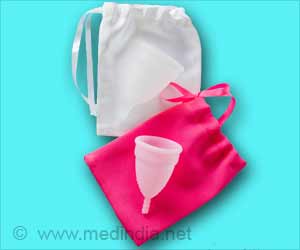Yoga increases signals of a neuromodulator in the brain which improves learning, memory and reduces levels of inflammatory markers.
Highlights
- Yoga and meditation improve the physical and mental well being of those who practice it.
- An intensive 3-month yoga and meditation retreat studied the effects of yoga and meditation on brain derived neurotrophic factor (BDNF), the activity on the hypothalamic pituitary adrenal (HPA) effects and inflammatory markers.
- Yoga positively impacted BDNF signaling, the cortisol awakening response (CAR) and immunological markers, and in addition improved subjective wellbeing.
In order to study the effect of yoga, participants were recruited to attend a 3-month yoga and meditation retreat. The retreat participants were assessed before and after participating in a 3-month yoga and meditation retreat that involved daily meditation and Isha yoga, accompanied by a vegetarian diet.
The yogic practices consisted of physical postures, controlled breathing practices, and seated meditations during which the participants focused on mantra repetition, breath, emptying the mind and bodily sensation.
Psychometric measures, brain derived neurotrophic factor (BDNF), circadian salivary cortisol levels and pro- and anti-inflammatory cytokines were assessed. Data on psychometric variables including mindfulness, absorption, depression and anxiety were collected.
Study Findings
Yoga and meditation for 3 months :
- Increased plasma levels of BDNF, a neuromodulator that plays an important role in learning, memory.
- BDNF also regulates complex processes such as inflammation, immunity, mood regulation, stress response and metabolism.
- Increased the magnitude of the cortisol awakening response (CAR) which is part of the hypothalamic pituitary adrenal axis (HPA), suggesting improved stress resilience.
- Decreased inflammatory processes caused by an increase of the anti-inflammatory cytokine Interleukin-10 and a reduction of the pro-inflammatory cytokine Interleukin-12.
"The observed increased BDNF signaling possibly related to enhanced neurogenesis and/or neuroplasticity, increased CAR likely related to enhanced alertness and readiness for mind-body engagement, and increased anti- and pro-inflammatory cytokines possibly indicating enhanced immunological readiness," explains Dr Cahn.
"An intriguing possible link between the effects on BDNF and the CAR is hippocampal functional integrity, since increased BDNF levels due to physical exercise has previously been shown to relate with hippocampal neurogenesis and likely relate to its positive effects on well-being and depression."
The Effect of Mental Fitness
In the light of previous studies of the positive effects of meditation on mental fitness, autonomic homeostasis and inflammatory status, the researchers think that their findings are related to the meditative practices that the retreat participants engaged in.
However, they suggest that some of the observed changes may also be related to the physical aspects of the retreat - yoga practice and diet - and that the observed change patterns are a reflection of wellbeing and mind-body integration.
The next step will be to conduct further research in order to clarify the extent to which the positive changes on mind-body wellness and stress resilience are related to the yoga and meditation practices respectively, and to account for other possible contextual factors such as social dynamics, diet and the impact of the teacher. "
To our knowledge, our study is the first to examine a broad range of pro- and anti-inflammatory markers in a healthy population before and after a yoga-meditation intervention. Our findings justify further studies of yoga and meditation retreats assessing for the replicability, specificity and long-term implications of these findings," concludes Dr Cahn.
Reference
- Rael Cahn. B et al., Yoga, Meditation and Mind-Body Health: Increased BDNF, Cortisol Awakening Response, and Altered Inflammatory Marker Expression after a 3-Month Yoga and Meditation Retreat, Front. Hum. Neurosci. (2017) https://doi.org/10.3389/fnhum.2017.00315.
Source-Medindia
















